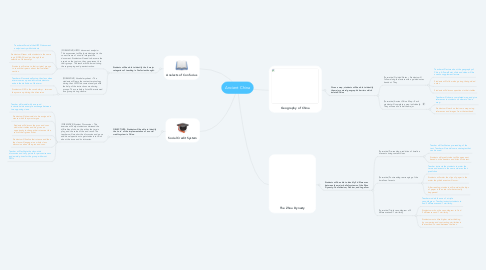
1. Analects of Confucius
1.1. Students will be able to identify the 4 major categories of teaching in Confucian thought.
1.1.1. (FORMATIVE) HIPPO document analysis – This assessment will help students get in the correct frame of mind to interpret the document. Students will need to become the expert on the topic so they can present it to their groups. The teacher will be monitoring the re-grouping and peer-instruction.
1.1.1.1. Teacher will model the HIPPO document analysis entry with students
1.1.1.2. Students will team with students in the same topic (JIGSAW) and go through their selection of the excerpt
1.1.1.3. Students will return to their original groups to teach their peers about their selected section
1.1.2. (FORMATIVE) Vocabulary sheet – The students will learn the content terminology during their HIPPO document analysis with the help of the instructions monitoring groups. The vocabulary list will be reviewed as a group during closure.
1.1.2.1. Teacher will occasionally stop the class when a term comes up and instruct students to write in the definition of the term
1.1.2.2. Students will fill in the vocabulary + terms as they come up during the discussion
2. Social Credit System
2.1. OBJECTIVES: Students will be able to identify the ‘cost’ of the implementation of a social credit system in China.
2.1.1. (FORMATIVE) Student Discussion – This exercise will help students understand the difficulties of choice, the ethics that are in play, and the value of the end result. The teachers will monitor the discussion and pose additional questions to get students to think about the issue and its intricacies.
2.1.1.1. Teacher will model with a second instructor/aide a sample exchange between two opposing views
2.1.1.2. Students will draw cards to be assigned a stance which they must argue
2.1.1.3. Students will discuss the pros and cons within their tables and be given an opportunity to change their stance at the cost of their green ticket
2.1.1.4. Students will finalize their stance and then the class will engage in a whole class discussion about the pros and cons.
2.1.1.5. Teacher will facilitate the class-wide discussion and tally points for persuasiveness and award prizes for the group with most PROs
3. Geography of China
3.1. Given a map, students will be able to identify the major natural geographic barriers which isolated China
3.1.1. (Formative) Guided Notes – Students will follow along the lecture with a guided notes handout. They
3.1.1.1. Teacher will lecture about the geography of China. A PowerPoint slide and video will be used to supplement lecture.
3.1.1.2. Students will follow along using their guided notes
3.1.1.3. Students will discuss questions in their tables
3.1.2. (Formative) Ancient China Map – Each student will complete a map individually. They will need to label the major
3.1.2.1. Teacher will show a completed map and give references to students on where to find a map.
3.1.2.2. Students will work on their own map using references and images from the textbook.
4. The Zhou Dynasty
4.1. Students will be able to identify 2 differences between the major belief systems of the Zhou Dynasty: Confucianism, Daoism, and Legalism
4.1.1. (Formative) Pre-reading prediction of timeline of events using context clues
4.1.1.1. Teacher will facilitate a pre-reading of the text. Teacher will model some strategies that can be used.
4.1.1.2. Students will predict what will happen next based on the headers and titles of the text.
4.1.2. (Formative) Post-reading rearranging of the timeline of events
4.1.2.1. Teacher instructs the students to order the terms and events in the same order as their prediction
4.1.2.2. Students will order the slips of paper in the order they think events will occur.
4.1.2.3. After reading, students will re-order the slips of paper in the order of what actually happened.
4.1.3. (Formative) Triple venn-diagram of 2 differences and 1 similarity
4.1.3.1. Teacher models the use of a triple venn-diagram. Teacher instructs students to find 2 differences and 1 similarity.
4.1.3.2. Students work on the venn-diagram to find 2 differences and 1 similarity
4.1.3.3. Students must utilize higher order thinking by comparing and contrasting similarities in the text and to read between the lines.
